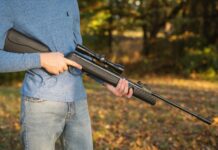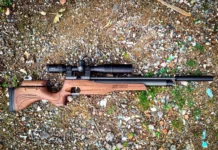Crabbing is a great way to spend time on the water, and trot-lining is a very effective and fairly easy way to fill the bushel basket. Crabbing in my family started when I was very young, when I would go out with my dad and have a fun morning—and then an even better afternoon as we got to feast on the succulent crustaceans. Then I started my own business crabbing commercially for the past two summers. Here are 10 things I learned while trot-lining on the bay.

1. Don’t be afraid to pick up and move your line. Crabs are very depth- and bottom-oriented. If you’re not in the right area, you simply won’t catch crabs. Although moving the line may seem like a waste of time when you’re out on the water, if you’re only catching a crab or two that are keepers every run, it’s worth it to try a different depth. The type of bottom you’re over also plays a big role. If you notice that your trot line is flinging mud off your baits and you’re not catching crabs, go try a spot where you know there’s a shell bottom.
2. Use a heavy enough anchor. I highly recommend using mushroom anchors. Mushrooms are very easy to handle, can be dragged if necessary, and work on all bottoms. When buying your mushroom anchor, it’s crucial to choose an anchor heavy enough to stick on the bottom when you pick up the line to start running it. If your anchor is too light, you’ll drag it as the boat moves forward. This process will create lots of slack in your line, and will ruin that run—while also creating a problem (all that slack) that you need to fix. An anchor anywhere from seven to 10 pounds should do the trick. Although heavier anchors are harder to move around the boat, it is more important that you can run your trotline effectively.
3. Tighten or tie baits as tightly as possible to your line and snoods. Crabs are very tricky carnivorous devils. Whatever bait you are using, you should tie or tighten your snood as tightly as possible. On a good day of crabbing, especially if you are using chicken necks, after a couple of hours your baits will start to go missing. If you don’t tighten down the baits to your line to the full potential, even more will be missing. Crabs are able to dislodge baits from the line and they will scuttle away with it whenever possible, freeloaders taking that bait you paid for and painstakingly put on the line.
4. Use clips or carabineers at the ends of your main line. It’s great to use metal clips or carabineers for attachment points. They allow you to connect your anchor and float lines to your main line in a timely fashion. This will make setting out your line much easier, because all you must do is put a loop (at the end of your main line) in the clip and then you can keep feeding your line overboard. Also, this allows for easy storage of your anchors and floats because when pulling in the line you can simply unclip it and leave the rest of the rig on the boat until next time. When using a 1200 foot line it can be advantageous to have clips in the middle of your line, too. If you’re uncertain where crabs are going to be, you can split your trot line into two half-lines and lay them in different areas, to test where the crabs are.
5. At each end of mainline, use a short length of galvanized chain. This will ensure that the line is resting on the bottom, so crabs are able to locate the baits and hang on until the scooper is ready to attack. When using a long trot line, some people like to add another short length of chain in the middle.

6. Keep enough slack in the line. Although too much slack can ruin your run and impede on the operations, it’s crucial to make sure that your line is not too tight, either. In most cases it’s obvious when your line is too tight; it will be stretched out so you see baits a mile away, and in turn, you will watch as crabs drop the baits because they see what’s headed for them. If this is happening to you, it’s actually very easy to fix. Go to the end and grab the anchor line, pull it until you feel the anchor lift off the bottom, and then simply drop it back down. This will add a bit of slack into your line and after you run it a few times, the line should level out and run more effectively.
7. Work with the tide and wind, not against it. When it is a bit choppy or windy it can be very hard to crab. Try your best to set the line in a calmer area that’s sheltered from the wind. If you know where the crabs are but your spot is troubled by wind, it is crucial that you run your line with the wind at your back. By doing this you will avoid many troubles; going too slow while the wind pushes against your bow, not being able to control where your boat is going, and your bow crashing against the waves and scaring off crabs. Don’t worry too much about how this affects your speed, because as long as you remain at idle it’s rare to go fast enough to cause crabs to drop off, even with a strong wind at your back.
8. Judge soak-time by trot line length. How long you wait before you begin scooping crabs again, after finishing a run, depends on how long your line is. When using a 600 foot trot line, it’s important to let your baits sit for 10 minutes (give or take) before running it again. This is because with a shorter line you will run it faster, and there will be less time for the baits to rest on the bottom. If you’re using a 1200 foot trotline, however, by the time you finish your run the first baits you scooped on have already been resting on the bottom for a while so you can go back to the start and run it right away. If crabbing is really hot, even with a shorter line you should start a new run quickly—in some cases the crabs will just eat off your baits, if you give them any extra time.
9. Use a wire-mesh net. Using a nylon or cotton mesh net is a very common mistake for beginner crabbers. Making an investment into a nice wire-mesh net is very important and will lead to a lot less frustration down the road. When using a nylon or cotton net, the crabs will get stuck in the mesh much easier or the mesh will tangle in the line. You have a lot less control with the mesh, and in turn will miss more crabs.
10. Try your best not to cast a shadow over your trot line. When running the line on a bright day, it’s important that you run the trot line in a direction so that your shadow doesn’t cast over top your line. If the sun is to your back and a shadow appears over your line, the crabs will see it and let go of the baits before you have time to scoop them. It may mean changing the direction you run the line in or even how you have your trot line laid out, but either way, eliminating that shadow will mean catching more crabs.
The more you go and do it, the more crabs you will catch. Every boat and every trot line is a little bit different, and it may take a season or two to get the trot-lining process down with confidence. But scooping crabs as you watch the sunrise is very relaxing—and eating crabs as you watch the sunset may even be better.
– by Max Rudow
Want to learn how to go trot lining from a kayak? Check out this video:







































![Air gun 101: The differences between .177 & .22 – Which jobs they do best ? [Infographic]](https://airgunmaniac.b-cdn.net/wp-content/uploads/2024/11/1773-150x150.jpeg)



